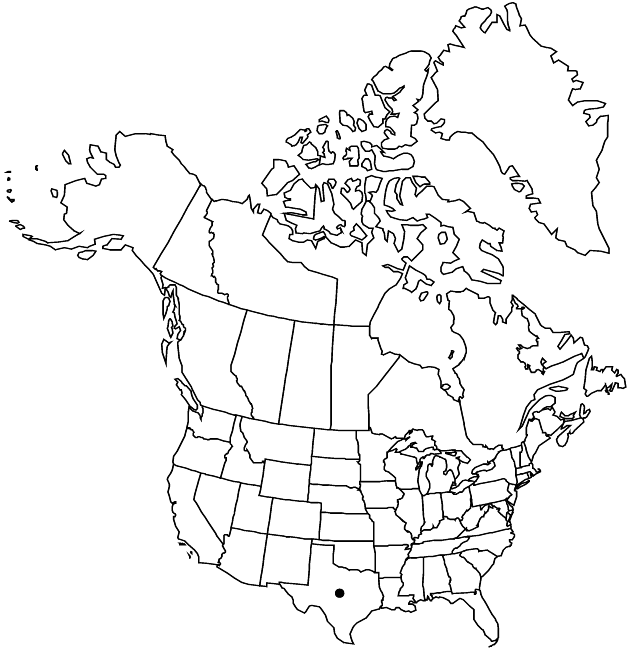Gundlachia triantha
Sida 21: 248. 2004.
Stems terete, finely sulcate, highly branched, bark tan becoming gray, twigs mostly green, minutely ridged, papillate-scabrous. Leaves ascending to spreading, sulcate adaxially, 5–20 × 0.5–1 mm; axillary fascicles sometimes present. Phyllaries 3–6 × 0.8–1.5 mm, mostly chartaceous, midveins enlarged distally, evident as green to brown patches, apices acute. Disc corollas 5–6 mm, tubes glabrous or puberulent, lobes 1–2.5 mm; style-branches 2–2.5 mm, appendages 1.2–1.5 mm. Cypselae 3–4 mm, hairy; pappi 4–6 mm. 2n = 18.
Phenology: Flowering late summer–fall (or with adequate rain).
Habitat: Often in gypseous, calcareous, saline, or gravelly soils
Elevation: 700–1500 m
Distribution

Tex., Mexico (Chihuahua), Mexico (Coahuila), Mexico (Durango), Mexico (Nuevo León)
Discussion
Selected References
None.
Lower Taxa
"[" is not declared as a valid unit of measurement for this property."]" is not declared as a valid unit of measurement for this property.
